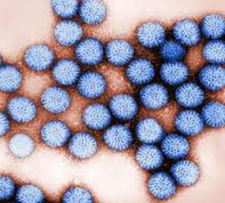 One of the most common childhood illnesses, rotavirus, which infects almost 100 percent of children at one time or another, has been badly beaten down, thanks to the work of a host of researchers from the public and private sectors (including Dr. Paul Offit, a member of the ACSH board of directors, and chief of the division of infectious diseases and director of the Vaccine Education Center at Children s Hospital of Philadelphia), as well as three pharmaceutical companies: Wyeth, Merck and GlaxoSmithKline.
One of the most common childhood illnesses, rotavirus, which infects almost 100 percent of children at one time or another, has been badly beaten down, thanks to the work of a host of researchers from the public and private sectors (including Dr. Paul Offit, a member of the ACSH board of directors, and chief of the division of infectious diseases and director of the Vaccine Education Center at Children s Hospital of Philadelphia), as well as three pharmaceutical companies: Wyeth, Merck and GlaxoSmithKline.
The virus, which causes diarrhea and vomiting, is generally regarded as simply a nuisance in the U.S, but data suggest otherwise. Prior to 2006, when RotaTeq (Merck) and Rotarix (GSK) were introduced, the infection caused 400,000 physician visits, 210,000 ER visits, and as many as 70,000 hospital admissions each year, at a cost of $1 billion per year in the US alone. By the time that the 2007-2008 peak season arrived, the number of confirmed cases declined by 80 percent, according to Margaret Cortese, M.D., of the CDC.
Even more impressive: The average hospital costs per child plummeted (to say the least) from $12,000 prior to the introduction of the vaccine to zero (source: Christopher Mast, Ph.D., of Merck Research Laboratories) and the ER visits dropped from 3.7 per 1,000 patient-years among unvaccinated children to 0.0 per 1,000 patient-years among infants who got the vaccine. Not half bad.
If this isn t a success, then show me something that is, comments ACSH s Dr. Josh Bloom. He adds, and this so-called nuisance in the US is a public health nightmare in lesser-developed countries, where, according to Dr. Offit, 2,000 children die every day from rotavirus.
The vaccines are in the news today because of two articles in the New England Journal of Medicine, which address the incidence of the rare, yet serious side effect of the vaccines intussusception, a life-threatening condition where sections of the bowel are drawn into nearby sections, causing a telescope-like rearrangement which can lead to obstructions of the bowel. Researchers at the Harvard Medical School concluded that about 1.5 excess cases of intussusception were associated with RotaTeq, while another group from the CDC estimated that number to be 5.3 per 100,000 doses for Rotarix.
Intussusception lead to the withdrawal of the first rotavirus vaccine, RotaShield, which was introduced by Wyeth in 1998, but pulled from the market a year later after the condition was found in about 1 child per 12,000.
Dr. Offit says, Although the newer vaccines are about five-times safer, one should consider the consequences of the 1999 withdrawal of RotaShield. During the 7-year time frame between the loss of RotaShield and the introduction of the newer vaccines, about 5 million children died (worldwide) because of a side effect that occurred 0.00008 percent of the time. We can thank the anti-vaccine, anti-pharmaceutical groups for these deaths. If ever there was a distorted analysis of risk vs. benefit, this is it.


